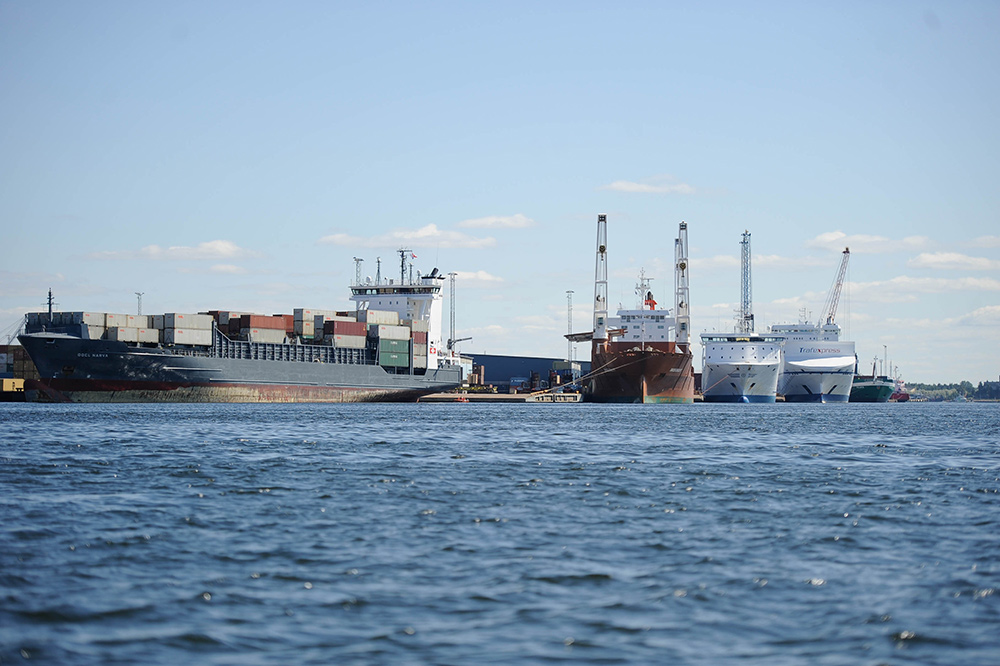Risk management challenges intelligent shipping
Maritime is developing in a smarter direction. There will be many uncharted waters along the way, and in order to sail through them a broad network of cooperation and vision will be needed. Remote pilotage is one of the areas of research for Janne Lahtinen, Maritime Senior Lecturer, and his belief is, that with a better understanding of technology, we can move towards more efficient smart solutions, without compromising safety.
Text: Sonja Sjögren, Kumppania | Photo: Pekka Lehmuskallio

Maritime is a continuously developing field, and changes do not happen overnight. The road to intelligent shipping is a long one, requiring innumerable studies and solid cooperation between the various interest groups. According to Janne Lahtinen, Maritime Senior Lecturer and researcher at SAMK (Satakunta University of Applied Sciences), risks present the greatest challenge.
– Risk identification and management are at the centre of everything. Smart technology offers numerous options for moving forward. It is impossible to manage unidentified risks completely, but we must start somewhere. At the beginning it will be necessary to make assumptions, in order to get something down on paper.
Developing intelligent shipping requires capital, giving rise to economic expectations. Intelligence is only a small part of the great shipping entirety, and this should be understood when carrying out development work.
– With today’s knowhow, we could already be achieving quite unbelievable goals. However, we cannot develop for the sake of development – there must be a commercial motive in the background that generates added value. Intelligent Shipping will only come into being, and only be funded, if we have a clear objective and commercial evidence of its viability. Technology is merely a means of reaching an objective; it is not an objective in itself, affirms Lahtinen.
Development to generate safety
Safety is of critical importance in maritime transport, as it is in all traffic.
– Safety is a so-called non-event, in other words, no anomalies take place. Safety does not happen – it is unsafety that happens. As an industry, Maritime is very capital-intensive, and it is often difficult to justify decisions merely on the basis of increased safety. The cost of materialised risks is generally very high, says Lahtinen.
When developing intelligent shipping, it is important to find those technologies which will genuinely create added value to all water traffic. The main emphasis is on commercial shipping, but the safety of all seafaring transport should also be taken into consideration at all times.
– Safety in traffic is always as strong as its weakest link. When developing technology, we should be able to increase the safety of all seafarers.
At the crossroads of new and old technologies
Although development may take place in marine transport quickly at times, not all the parts of the whole fit into place in the new technology simultaneously.
– We will be going through a period of transition, and to some extent we are already experiencing it now. Smart technology may be on the increase, but conventional vessels will still be in use for decades. Today’s technology will remain alongside the new for years to come, affirms Lahtinen.
As the use of smart technology increases, maritime crews also need a greater understanding of the technology. The maritime education at SAMK and the ISTLAB project are serving to meet this need.
– We are dealing with complex vessels and technology. The current systems contain thousands of separate, intercommunicative processes and automation. We at SAMK undertake to open people’s minds and increase their understanding of the technology to the greatest extent possible, Lahtinen explains.
There are also many things in marine transport that do not change over time. The main objective remains the same: the transfer of goods from A to B.
– Marine transport is a part of an enormous logistical building block. Intelligent shipping development work should serve to support this, and with the development of technology, it will be possible to attain goals faster and more safely.
Lahtinen, a member of the project steering group, believes that the ISTLAB project is well-suited playing field for developing the industry.
– ISTLAB is a brilliant environment and platform, with the aid of which we can test new technologies and understand the way they work, he enthuses.
ISTLAB in-brief
The aim of the project is to create a smart joint-use Intelligent Shipping Technology test Laboratory (ISTLAB), which will merge and consolidate the navigation simulator of Satakunta University of Applied Sciences, the Finnish Transport and Communications Agency’s bathymetric model of the Rauma deep-water fairway, Finnish Transport Infrastructure Agency’s smart buoy and sea current monitoring, the Finnish Geospatial Research Institute’s navigation system research and the Finnish Meteorological Institute’s survey of wave, sea level and ice conditions. The technology group Wärtsilä has delivered a navigation simulator and specific mathematical models.
SHARE ARTICLE
Subscribe for Maritime newsbulletin!
Do you want current information about Satakunta University of Applied Sciences' maritime projects, research and education?
